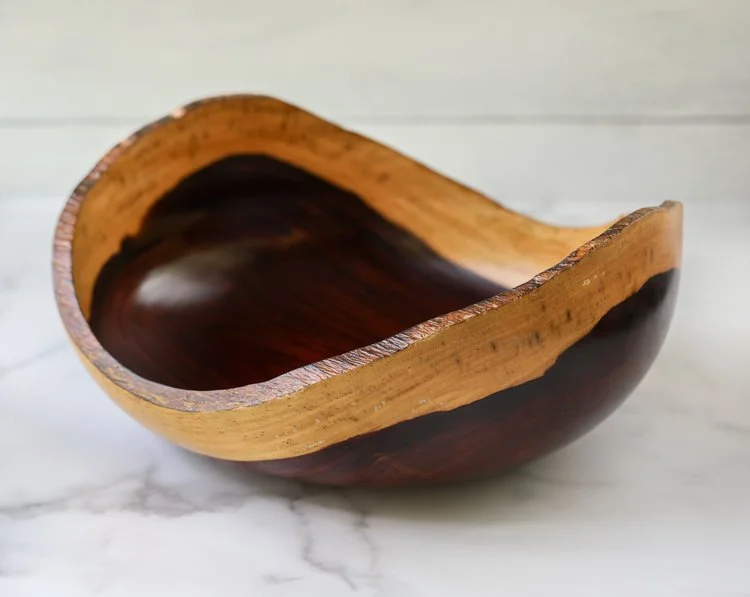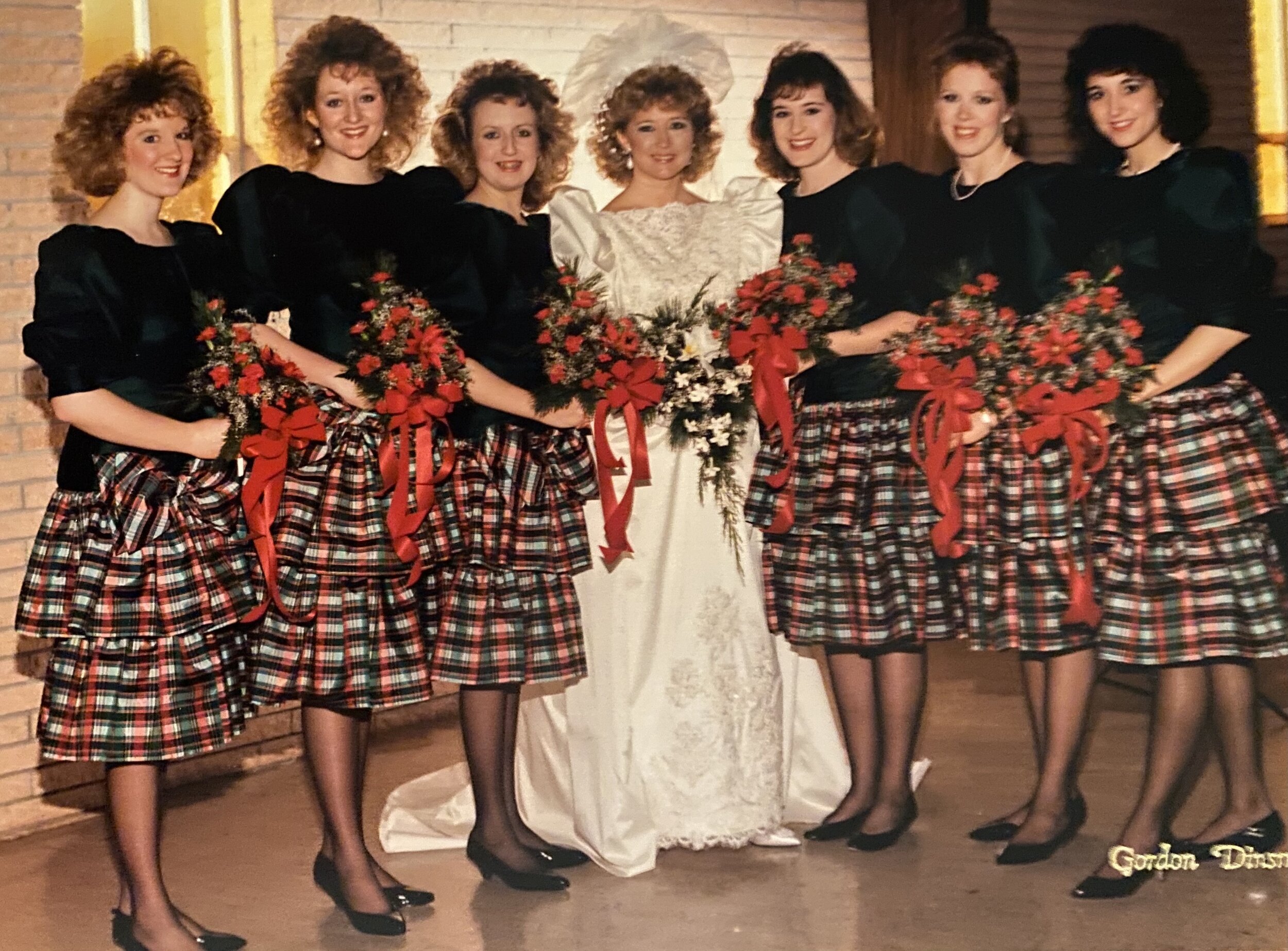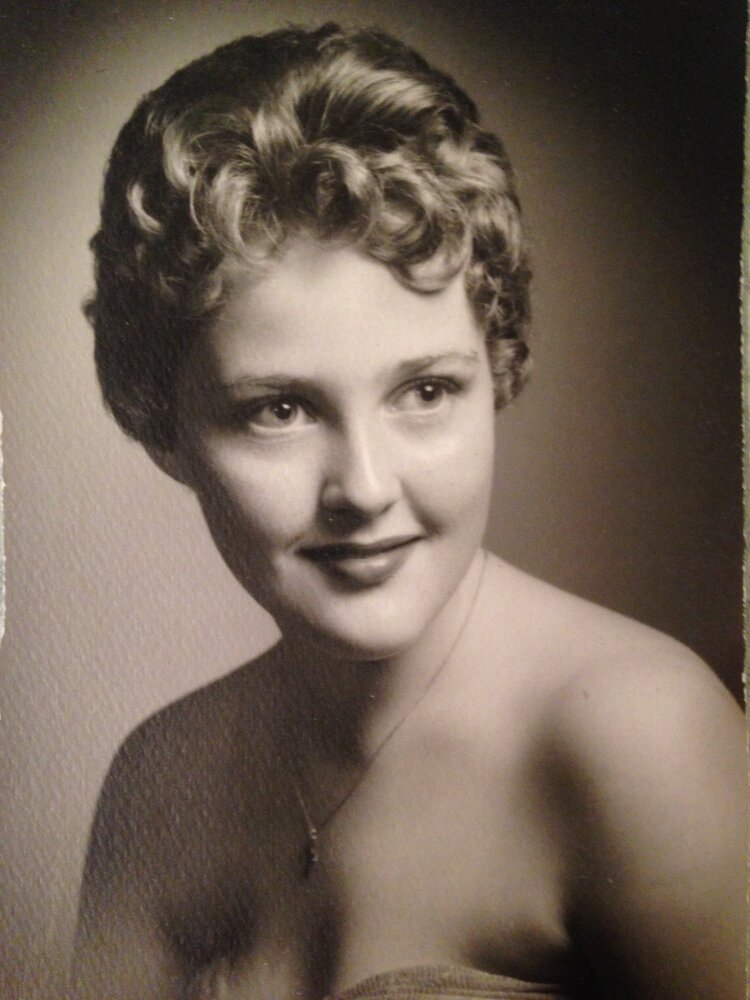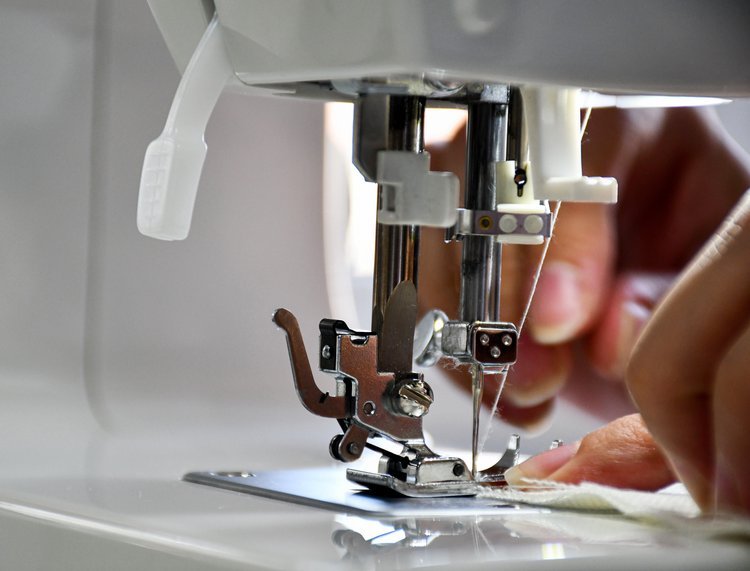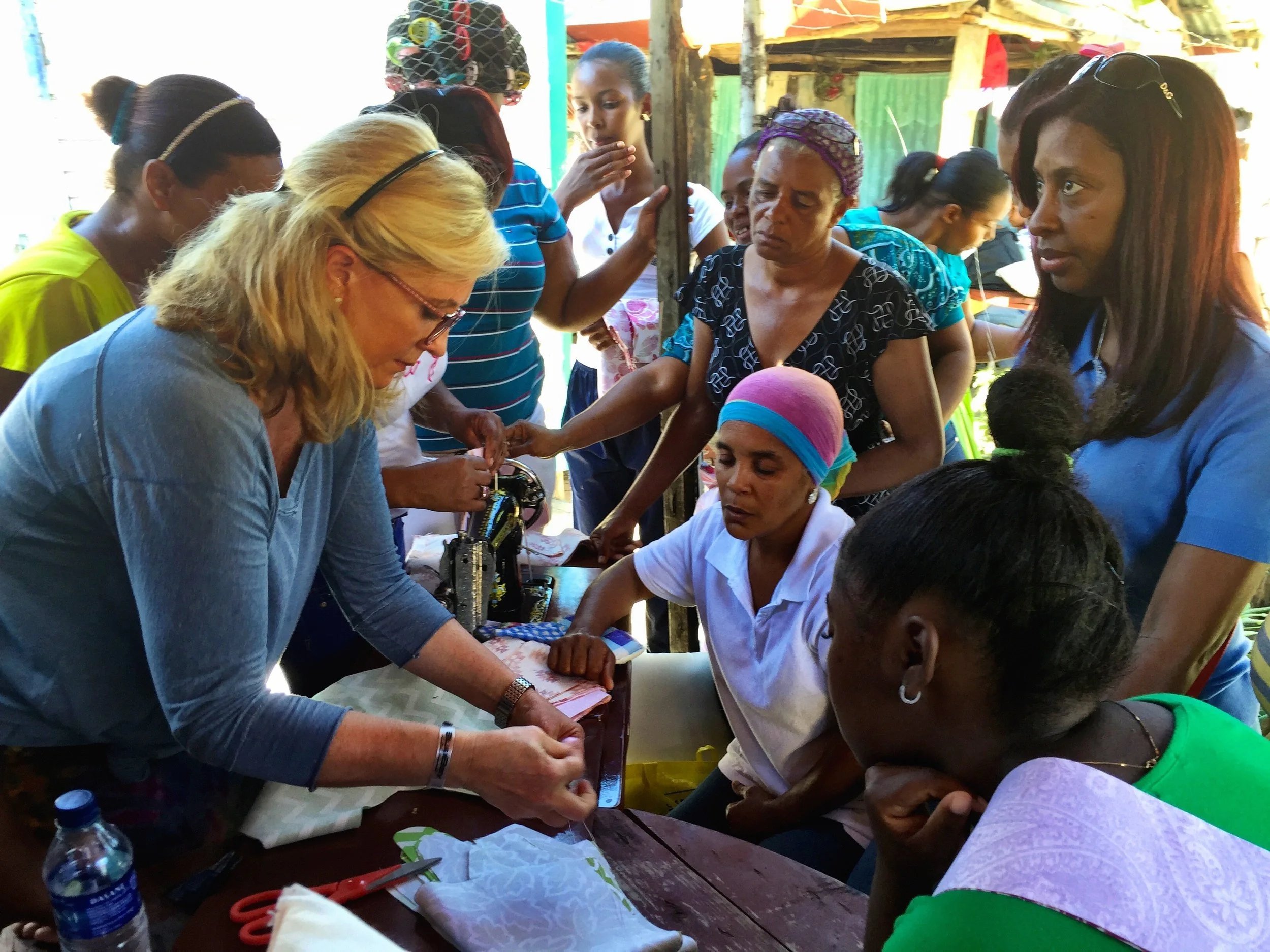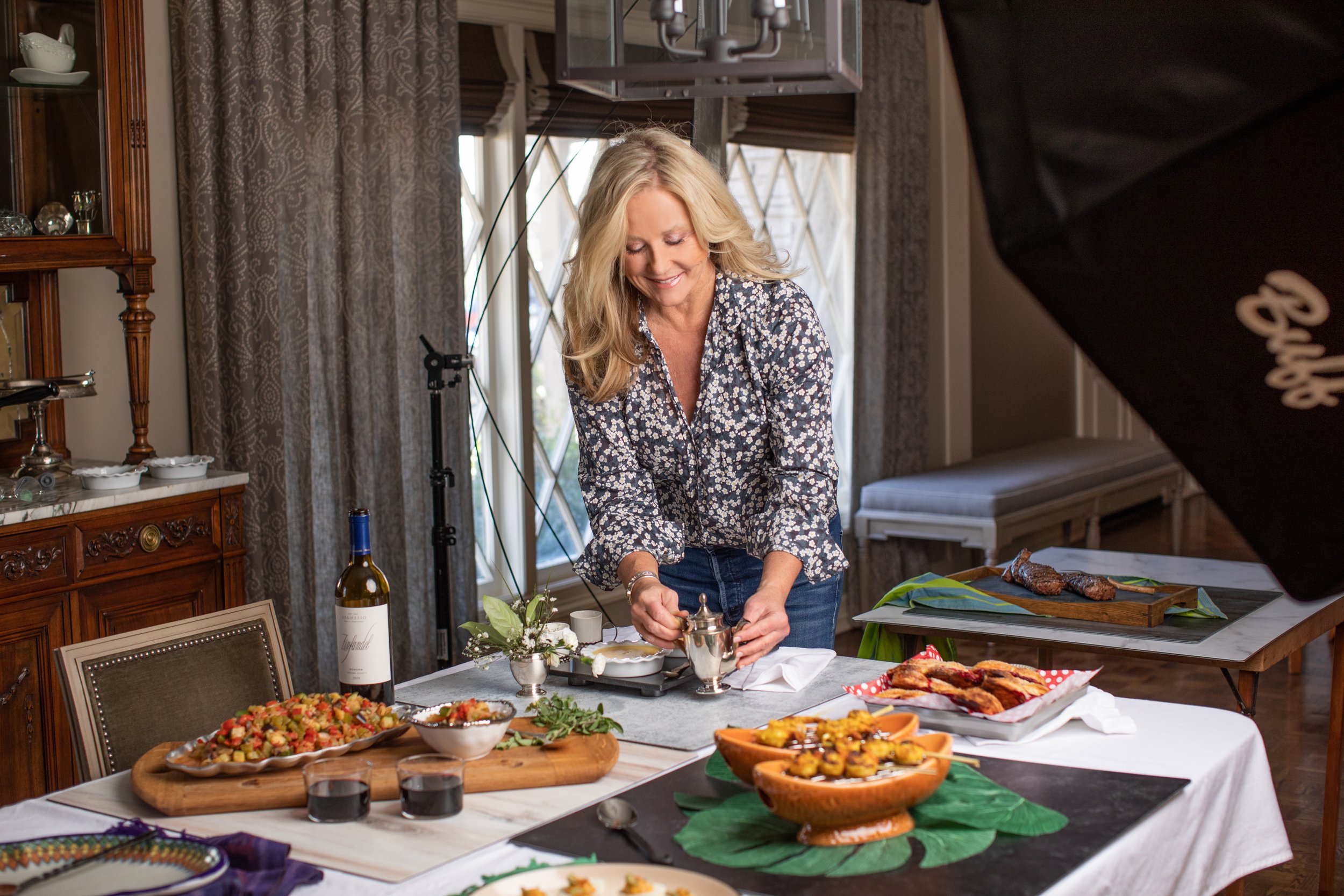A Room with a View....Platter View, that is…
It’s no secret that I collect bowls in every shape and size, and I’m sometimes given colorful bowls from friends. When I travel, one of my favorite things to collect is bowls and serving platters, especially ones that are handmade by people I meet.
Since I was a little girl I wanted to throw dinner parties with pretty plates and platters of food. I was in my 30s before I started collecting unique bowls and serving dishes to use in my cooking classes and small dinner parties. My mother gave me some beautiful pieces as gifts at Christmas and birthdays, many which she had saved from her mother, or found on sale at her favorite department stores.
It’s no secret that I collect bowls in every shape and size, and I’m sometimes given colorful bowls from friends. When I travel, one of my favorite things to collect is bowls and serving platters, especially ones that are handmade by people I meet. I’ve carried many special pieces back from faraway places, and I try to remember the stories each one possesses.
One of my first purchases from another country was a rosewood bowl from Costa Rica, which I’ve used dozens of times to serve salads and fruit. The man who made the bowl was the owner of the shop, and he proudly polished it before wrapping it in paper for me to take to its new home. Another favorite is a basket bowl I got in Rwanda, made by a woman named Habimana, which means “God exists”. She makes baskets in her home from grass and raffia, and sells them in the markets where tourists shop.
In Florence, Italy I purchased some hand-painted bowls made by a husband and wife who have been making ceramic hand-painted bowls and tiles for fifty years. A pottery platter with wooden stick handles made in Chile was a tedious thing to carry home since it weighed nearly 15 pounds. I have wine barrel cheese boards from Napa, California, and glass trays made by my friend in Scottsdale, Arizona. A few years ago, I bought a tiered bowl set made by Swedish artist Carrol Boyes at a gallery in SOHO, New York. I’ve used it so many times for dips and sauces, and I simply adore her work. I learned this week that she passed away suddenly, which makes my piece so much more special to me.
You can imagine that after years of collecting these bowls and platters, that I’d need a room to store and display them. I had my friend Ron make some special oak cabinets where these special pieces live, waiting to be carried to a table full of delectable food. When I need inspiration for a menu I often go into the “platter room” and look at my treasures, visualizing the food that could fill them. My silversmithing tools are also in the platter room, so I can sit at my work table and glance at the platters as if they are misbehaving or playing Musical Chairs. Every couple of months I rearrange the platters since they often are misplaced after parties and classes. I try to keep the wooden pieces together and the metal pieces together, but sometimes I place a mismatched piece among them just to confuse everyone.
These platters and bowls have become my friends. I get upset when they are chipped or stained, but I try to excuse it because I know that if they are being used for what they are created to do, they are always subject to damage.
Smoky Hair and Singed Lashes
I have a confession. In my backyard, you will find no less than eight (8) grills. The obsession began simply enough with a gas grill. It was easy to fire up when cooking some burgers and steaks. But, when I was asked to do a cooking demonstration at an outdoor patio and grill store in my hometown, I knew I would have to up the ante on my grill knowledge. That event would turn out to be my baptism by fire and, I’ve gone on to tame many fires in a variety of vessels, each possessing its own charm.
I have a confession. In my backyard, you will find no less than eight (8) grills. The obsession began simply enough with a gas grill. It was easy to fire up when cooking some burgers and steaks. But, when I was asked to do a cooking demonstration at an outdoor patio and grill store in my hometown, I knew I would have to up the ante on my grill knowledge. That event would turn out to be my baptism by fire and, I’ve gone on to tame many fires in a variety of vessels, each possessing its own charm.
I never set out to be a “pit master,” the title given to those who truly devote their lives to stoking fires and precisely regulating temperatures to cook the perfect brisket or to delicately smoke vegetables. I’m fortunate to have some outstanding pit masters as friends, and I’m telling you, they live for playing with fire and smelling like smoke, even if they’ve just showered and shaved.
For me, playing with fire is a science, so I approached it like a student, buying a book and experimenting with charcoal. I bought one of those tall metal chimneys to get the coals red hot so they could be dumped into the grill. The first time I was ready to unleash the glowing-red embers, I noticed a few hot ashes fell from the bottom onto my feet. I noticed because I was wearing flip-flops, and my toes got singed. Luckily, I held it together and managed to not drop the coals and cause a house fire. It also taught me to be more conscientious about my footwear when grilling.
So, when I learned how to build a top-notch fire, I was ready to make my big grilling debut at the grilling store. When I walked through the front doors, it was like I had entered the Saks Fifth Avenue of grills. That day changed my life…and it also ended up costing me a lot of money!
The first grill I fired up was an OFYR, which uses wood as its fuel instead of charcoal. The wood is piled up in the center, and is encircled by a large metal cooking surface, giving you the option to cook on direct or indirect flames. It was magical. I cooked sausages, pork tenderloin, and stuffed mushrooms that would make any pit master’s mouth water.
Next to the OFYR was a massive charcoal grill with a ceramic interior. The size of this behemoth grill allowed me to whip up grilled pizzas and chicken wings at the same time. (I did it without sizzling any precious toes. Shoe selection – check!) That day we definitely sold some grills. And, over the course of a few months, a couple of those grills made their way to my backyard. They arrived gradually, and very inconspicuously, just like the shoes that mysteriously appear on the shelves of my closet. Much like shoes, it’s important to have a grill for every occasion.
After my first trip to India, I wanted to own a tandoor. I watched so many chefs and street vendors making bread and meats in their tandoors, and the flavors and the experience were unforgettable. I knew deep in my heart I needed a tandoor. After doing some research, I found one I could buy online from a company in Pennsylvania. It arrived at my house in a 300-lb wooden crate with wheels, and had to be dismantled by a friend who is far more mechanically inclined than I.
To this day, the tandoor is one of my most prized possessions. It’s been said that a proper tandoor chef has no hair on their arm. If that is true, then I must be quite proper. The tandoor is one of my most-used grills, and after slapping many, many rounds of naan dough on the wall of my tandoor, my right forearm is bare. I happily sacrifice every little hair knowing the joy it brings to serve stacks of steamy, soft naan to my friends and family.
As much as I love to grill outside, whether it’s the hottest day of the summer or during a snowstorm in January, I’ve yet to discover a trick for not smelling like a smoke stack. My hair is like a super sponge that absorbs the aromas of smoke and grilled meat in a matter of minutes. I try to outsmart the smoke by wrapping my hair in a towel to protect it from the wafting smoke, but it’s not foolproof. There may have been a few times I’ve forgotten the towel was still on my head as I opened the door for arriving dinner guests.
Unpredictable flames certainly make grilling a more dramatic way to cook, and I’ve provided some unintended entertainment at barbecues I’ve hosted. Once, I was cooking for a big outdoor party and, when I opened the grill to turn the meat, a flame scorched the hair around my face, leaving me with crispy hair twigs that took months to grow back. I’ve also lost more than a few eyelashes to the searing heat of a hot grill. Fortunately, I haven’t had any serious burns, and these minor mishaps haven’t prevented me from lighting the next fire.
It’s never been my goal to be a grill master; but as an avid grill appreciator, I’ll never tire from standing over a smoky pit of hot coals, watching my food absorb all the flavors that make the sweaty brow, the singed eyelashes and smoky hair worth all the trouble.
Painfully Curly
I grew up in a house full of women. My mom taught my sisters and me the importance of having well-coifed hair at every opportunity. I remember being in the fifth grade, sitting in front of the mirror in my room trying to curl my hair with a curling iron. Nearly every day I burned my ear or fingers on it, but I was determined to have perfect curls like the models in my teen magazines.
I grew up in a house full of women. My mom taught my sisters and me the importance of having well-coifed hair at every opportunity. I remember being in the fifth grade, sitting in front of the mirror in my room trying to curl my hair with a curling iron. Nearly every day I burned my ear or fingers on it, but I was determined to have perfect curls like the models in my teen magazines.
We were lucky that Mom knew how to give us all home perms. Every few weeks, when it was my turn to get a perm, I would sit in a chair in her bedroom while Mom rolled every strand of hair into prickly rollers smashed tightly into my head. I have a lot of hair, and it took a lot more rollers to curl my hair than my sisters’. Thank goodness there was a television in Mom’s bedroom so I could watch The Brady Bunch while I was being tortured.
The worse part of getting a perm (as if sitting for two hours getting your hair pulled wasn’t bad enough), was when Mom squirted the bottles of chemicals over my head. It took two bottles for my hair because there were twice as many rollers. The smell was excruciating. It burned my nose, and caused anyone in the room to lose their breath for several minutes, even with the fan turned on. I don’t remember how long I had to sit there while the chemicals marinated my hair, but it seemed like hours. When the timer finally went off, Mom would remove one of the rollers to make sure it was “set”. If it wasn’t a tight curl, she would make me sit even longer. Once she deemed it ready, I endured the next level of torture, removing the rollers.
It must have been worth all the pain and agony because I asked Mom to perm my hair for many years during high school and college. It was the 80’s, and everyone was doing it. When I look at the photos from my first wedding, I laugh at the amount of hair on my bridesmaids’ heads. We all look like we’re wearing halos of cotton candy. I was well into my twenties when I stopped getting my hair permed, but I still had pretty good skills using a curling iron.
After college most of my friends were getting their hair “frosted” at the hair salon. That meant they were getting streaks of blond put into their dark hair. I couldn’t afford to go to the salon, so I bought a box of hair color at the grocery store. It had a cap that looked like a swim cap, but it was covered with tiny holes. The box also contained a crochet hook for pulling your hair through the holes. I convinced my husband to pull my hair through the holes and smear the chemicals all over the strands of hair sticking out of my head. It took several hours to get through the process, but I had frosted hair like all my friends.
I’m glad I had a mom that cared about her looks, and shared her beauty tips with her daughters. When she got cancer one of the hardest things she dealt with was losing her hair. She spent a lot of time choosing the right wig that looked the most like her own hair. In a way, she was happier with the wig because she never had to curl it.
As I’ve gotten older, my hair has become naturally curly. But now I often use a flat iron to straighten it. I’m not sure why I can’t be satisfied with the natural state of my hair. Maybe it’s just knowing that I have the ability to change it if I want to. But if I ever lose my hair I’ll be first in line at the wig shop, and I’ll likely buy one that’s curly, and one that’s straight. And who knows, maybe I’ll become a redhead.
The Green Dress
Long before I became a chef I had another career that formed the building block for the person I’ve become. As a young girl, I never imagined I would be a professional seamstress. I grew up knowing how to sew, but never thought it would become a career. Sometimes necessity becomes a journey of its own, and mine began with a green dress.
Long before I became a chef I had another career that formed the building block for the person I’ve become. As a young girl, I never imagined I would be a professional seamstress. I grew up knowing how to sew, but never thought it would become a career. Sometimes necessity becomes a journey of its own, and mine began with a green dress.
My sewing education began by my mother’s side watching her stitch together clothing on her Singer sewing machine. She made all my clothes, and, to me, it seemed a fabulous magic trick. She would pin paper patterns onto fabrics, cut, then sew the pieces together transforming it all into a dress, robe, or Halloween costume. She showed me some basics and would let me practice sewing with her fabric scraps. Let’s just say my Barbies had some unique ensembles.
Eventually, my mom upgraded her sewing machine, and the machine I watched her use for years became mine. Many weekends were spent at my machine creating my next outfit. Of course, I made many mistakes, but I could always go to my mom when something didn’t fit or if I scorched the front of a blouse with the iron. There were times I swore I’d never sew again, and I avoided my sewing machine for weeks. But I always went back with the determination to make something wonderful.
Once I got to the semester of sewing at Home Ec, I was the star pupil. All that practice—and all those mistakes—had made me into quite the seamstress. When it was time for college, I decided to study fashion design, where I progressed from stitching simple skirts and shirts, to tailoring complicated jackets and gowns. It became such a passion that I continued to graduate school for clothing design. I dreamed of moving to New York City to work for a fashion designer; instead, I fell in love and got married my last semester of grad school.
As it often happens with young love, we had no money, so I needed to get a job if the bills were going to be paid. I had moved to Tulsa, Oklahoma, two hours away from my hometown, and I knew no one except my new in-laws. The only skill I had was sewing, and it was then I realized I could be a seamstress if I could just get my name out there.
I discovered a high-end fabric store in Tulsa where the socialites and debutants shopped for expensive fabrics and hired seamstresses to make their clothes. The shop looked like a glamorous boutique with dazzling chandeliers and tables stacked with silk, wool, and velvet fabrics. I introduced myself to the owner, Jo, and told her I would like to be a seamstress for her customers.
Instead of ignoring me, she smiled and gave me an ‘assignment’ so she could see my work. She wanted me to sew a dress for myself, and she would determine if I was skilled enough to sew for her customers. If it passed her exacting standards, she would display the dress in her shop for all her customers to see. She chose a Vogue designer pattern and pulled fabrics to measure and cut. The dress had two different fabrics across the front, and she chose a forest green wool crepe and deep green silk velvet. She matched it with thread and a zipper, and neatly wrapped everything in tissue paper for me to take home.
When I got to my little apartment, I opened the tissue and stared at the fabrics. I had never held nor cut fabrics that cost $75 per yard. I was terrified. I called my mom and told her what I was getting ready to do. I started sobbing, telling her I had made a huge mistake by going into that store. Even with all my education, I still didn’t feel confident enough to make dresses and gowns for rich women. Mom talked me through it like she always did, and I was able to buckle down and make the dress. The moment of truth came when I tried it on and – the dress fit exquisitely. I was in disbelief that I had created such a masterpiece. It passed Jo’s test and hung in the store for three months before I got to take it home.
The green dress was the beginning of a career that spanned ten years. At times, I had as many as twenty projects going at one time, and often sewing 16 hours a day. I still made a lot of mistakes, sometimes purchasing more fabric to start over. Sometimes a client asked if I could make her look taller, slimmer, bustier, or sexier. I wasn’t a miracle worker, but for the most part women felt beautiful in the dresses I sewed for them. I also found myself “on call” for wardrobe emergencies – the late-night phone calls asking me to hem a dress or alter a sleeve.
I learned many lessons during my career as a professional seamstress: The value of hard work, patience, and the importance of paying for services promptly, and I’ve used those lessons in my later career as a chef. I still have the green dress, and I’ll always keep it as a reminder of the fears I overcame, and the skills I acquired during those years. I still have the sewing machine that my mom gave me, although I’ve upgraded to newer model that now sits in my sewing room seldom used except for repairs and an occasional pillow. But inside, I know even 30 years later that if I ever had to, I could make a ball gown suitable for the runway.
The Life of a Seamstress
When I was a little girl, my mother made all my clothes. My sisters and I often had matching outfits, and I remember many Saturday nights when Mom was hemming our dresses to wear to church the next morning. I wanted to learn to sew when I was very young, and my mother let me sit at her Singer sewing machine, stitching scraps of fabric together making Barbie clothes. When I was in junior high, Mom got a new sewing machine and let me have her old one, which I kept in my bedroom on a typing table where I sewed nearly every day after school.
When I was a little girl, my mother made all my clothes. My sisters and I often had matching outfits, and I remember many Saturday nights when Mom was hemming our dresses to wear to church the next morning. I wanted to learn to sew when I was very young, and my mother let me sit at her Singer sewing machine, stitching scraps of fabric together making Barbie clothes. When I was in junior high, Mom got a new sewing machine and let me have her old one, which I kept in my bedroom on a typing table where I sewed nearly every day after school.
For my high school graduation gift, my parents gave me my own sewing machine to take with me to college. Since I was probably the only girl on campus with a sewing machine in her dorm room, I was often asked to hem jeans, stitch torn jackets, and repair other garment mishaps. I not only sewed my way through college, I also went to graduate school to study clothing design. I was a graduate assistant and was tasked to teach the freshman sewing classes, which was one of the most frustrating jobs I’ve ever had. While I was in grad school, I decided to get married, which required the responsibility of making a living in order to pay the bills in our little apartment in Tulsa, Oklahoma. While I was still taking classes, I decided to use my sewing skills to earn money. My new mother-in-law told all her friends I was for hire, and soon the little sewing room in our apartment was full of fabric, patterns, and measurements for clothing I was commissioned to make.
For many years, I sewed night and day. I made prom dresses, costumes, bridesmaid dresses, draperies, and anything that required a needle and thread. I rarely made bridal gowns, but if I was desperate enough for the money I would give in and make one or two. There were occasions when a client “accidentally” forgot her checkbook when she picked up her dress, and I let her have it anyway. Many times, the check never came. My family suffered when that happened, and I vowed to always pay workers what they earned when they had completed a job.
After ten years of marriage, I made the choice to file for divorce from my husband. My attorney told me that the only way I could convince the judge that I could fully support my two young children was to get a job with a steady paycheck. I was hired by a local non-profit to teach impoverished kids how to cook nutritious meals. I loved it so much, I began taking cooking classes, which was the beginning of my new career as a cooking teacher. I did, in fact, gain full custody of my children and I closed the door on my sewing business. I had many bittersweet memories of those years of sewing, but mostly bitter. I knew I had made a lot of people happy with their new clothes and draperies, but it took a toll on my body and emotional health.
Many years after I’d put down my needle and thread, I was asked to teach sewing to a group of women in the Dominican Republic. They were part of a microfinance program where they received small loans to start their own businesses. These women were in good standing with their loan officer and were given the reward of taking sewing lessons. When I arrived, they had ten treadle sewing machines set up outside under a tin roof. They lived in an impoverished community where there was no electricity or running water. The sewing machines, which didn’t require electricity, had been donated in hopes that the women could learn to sew as a business. For four days, I taught 29 women, with only ten machines. Knowing they likely wouldn’t have a sewing machine to use in their own homes, I taught them how to sew by hand, making rows of tiny stitches in the fabrics I had brought with me. After four days, each woman had sewn a hot pad, coin purse, and tote bag. Easter was just two weeks away, and the women all agreed they wanted to save their tote bags to carry together to church on Easter Sunday.
The following year, on a trip to Rwanda, Africa, I was in the capital city of Kigali shopping in the huge outdoor market where you could buy fruits, vegetables, beads, and brightly colored fabrics. There were dozens of women sitting at their sewing machines, lined up along the perimeter of the market. You could purchase fabrics and have these women sew them into clothing, bedding, or whatever you wanted. I noticed they were using large sheers to remove stitches in the fabrics, which is a very difficult task. I returned to Rwanda the next year with a bag full of seam rippers, a small tool for removing stitches. I handed each woman a seam ripper and told them how to use it, knowing it would make their job much easier. They had never seen such a tool and couldn’t believe I would give them a gift when I didn’t even know their names.
Occasionally, I sit at my sewing machine to hem a pair of jeans or stitch a torn pillowcase. My skills might be a little rusty, but I’m always amazed that I still remember how to thread my machine and stitch a straight line in record time. Sewing will always be an important part of my past, and I regret I never taught the skill to my daughter. I regret I didn’t enjoy it more. But I’ll never regret learning to sew next to my mother when I was a little girl, enjoying her patience with me when I made countless mistakes. I won’t regret knowing I worked hard to pay the bills and feed my family. And, although I’ll always be remembered as the dormitory seamstress, my greatest hope is that I’m remembered by those women in the Dominican Republic and Rwanda as someone who understood their struggles and cared enough to appreciate them.
Second Helpings
My favorite class in college was Meal Management (yes, that was really a class!). I learned how to set the table, plan a menu, and prepare food that was hot and ready to serve when my guests or family sat down. I got married right out of college, and there was very little money for throwing dinner parties, but I did the best I could.
My favorite class in college was Meal Management (yes, that was really a class!). I learned how to set the table, plan a menu, and prepare food that was hot and ready to serve when my guests or family sat down. I got married right out of college, and there was very little money for throwing dinner parties, but I did the best I could. On those rare occasions, I usually baked potatoes and served them with different toppings, which was an inexpensive and delicious way of feeding my guests.
A couple years after I married I invited a couple from church to our house for dinner. They lived in a big house and I thought they were wealthy. They were actually very wealthy compared to me. Nervously, I cooked one of my favorite dishes from a Chinese cookbook I had received as a wedding present. It was beef with fermented black beans and rice. I didn’t know what fermented black beans were, so I just used black beans from a can. I used every cent I had to buy the ingredients. I set the table with my wedding china and served my guests the dish I had prepared all afternoon. The husband of the couple finished his plate and asked for another helping. When I told him I didn’t have any more to serve he looked at me like I had to be joking. I was so embarrassed, and that night I decided I would not invite friends over for dinner until I could afford enough food for two helpings. It was a long time until that happened.
When I look back on that time in my life, it saddens me that I felt so much pressure to present food that would impress. I have been to many countries around the world, including impoverished communities where people have invited me to their table and proudly shared their food me. We often didn’t have electricity or running water, but it was from them I learned that gathering around the dinner table is not just about the food. It’s more about being surrounded by people who enjoy conversation and common interests. The food is only secondary. It doesn’t matter if I’m eating lentils made in the home of a woman in India, or bread made in a small skillet in Rwanda. It’s about establishing a relationship with a new friend. Or an old friend.
It’s been many years since that night I couldn’t serve two helpings, and I’ve learned a lot more about cooking and entertaining. Although I can now afford to make more food, I try to focus on the real meaning of feeding my guests. My goal while bringing people together around my table is to create a community of friends, family and strangers to forge memories to last a lifetime. The food I prepare is nourishment and a means to start conversations with the stories the ingredients tell.
I’ve lost touch with the couple that sat at my table that night many years ago. I know they didn’t mean to hurt my feelings, and I’m thankful for the lessons I learned from them. I don’t expect second helpings when I’m invited to someone’s table, but I do expect to build relationships, whether temporary or lasting. And if I’m lucky I’ll get invited back, which is the best second helping I could ask for.
Neena and Mammaw: My Two Grandmothers
I was fortunate to have two incredible grandmothers who couldn’t have been more different from each other. My maternal grandmother was named Connie, but her grandchildren called her Neena.
I was fortunate to have two incredible grandmothers who couldn’t have been more different from each other. My maternal grandmother was named Connie, but her grandchildren called her Neena. She grew up in Arkansas and began painting when she was a little girl, a skill that helped her get through a tumultuous childhood. When she was very young she married my grandfather who soon became an alcoholic and domestic abuser. After many years of suffering, she took her three children, including my mother, to a movie theater, escaping during the intermission to the train station where they boarded a train to Texas. A couple years later, she married Jack Walstad, a petroleum engineer who was kind enough to adopt her three children and they also a son together. Even though he wasn’t blood related, I knew him as my grandfather, Pappaw. He was one of the most loving and generous men I’ve ever known. They moved to Hobbs, New Mexico, and through his job with an oil company, Pappaw often won trips in corporate competitions. He was able to take Neena all over the world, and they never returned home without gifts for all the grandchildren. I remember the anticipation of seeing what they would send my sisters and me from faraway lands. Because of those souvenirs, I always had exciting things for show-and-tell day at school.
My grandparents’ house in New Mexico was the most colorful of any house I had ever seen. Neena painted their furniture and cabinets in bright colors and her beautiful paintings covered the walls of the entire house. She often had visitors over to admire her art, and many ended up buying pieces for themselves. Neena often traveled alone to art schools around the country to learn new techniques for her paintings, using different mediums like oil, acrylic, and watercolor. After the death of her oldest son, my Uncle Bill, as part of her grieving, she took a class in enamel art and made beautiful copper enamel bowls and jewelry. She gave me one of her first enamel pendants that I made into a necklace in her honor.
Neena’s independent nature and fierce desire to learn inspires me every day. It is from her that I’ve had the courage to pursue my dreams, leave a difficult marriage, travel alone, and use art as a tool for getting through difficult times.
Neena also loved to throw dinner parties for friends, and they always had a theme, usually requiring everyone to wear costumes. She spent days making decorations, painting the invitations, and planning the menu. The dish for which she was most famous was chicken and noodles. She rolled the noodles by hand, which impressed everyone since she was probably wearing a silk blouse and high heels through the entire process. Neena’s hostess skills were inherited by my mother, and then passed on to me. And to my delight, my own daughter has a knack for entertaining, a skill most of her friends know little about.
My other grandmother was Mammaw, my father’s mother, and she couldn’t have been more different from Neena. Mammaw was the eleventh child of sixteen, but that’s about all that I know about her youth. I do know that she loved a good joke and was an accomplished tap dancer. And despite the fact that she grew up very poor, she was one of the happiest people I have ever known. She and my grandfather, (who died when I was a baby), raised my dad and aunt in a tiny house in Oklahoma City. Some of my best childhood memories are the sleepovers my sisters and I had at Mammaw’s house. We loved asking her to tap-dance on the wood floor while we tried to mimic her moves. We took turns sleeping with Mammaw in her bed, and she kept us awake with stories about our dad and her own childhood growing up with so many siblings. After our breakfast of Cream of Wheat, we played in her spare bedroom where she had a closet full of dress-up clothes, high heeled shoes, and Barbie dolls. She had a drawer filled with jewelry for us to play with, including long strings of pearls, clip-on earrings, and feather boas. My father’s childhood desk was in that bedroom, and we used it to play school and “office” since Mammaw had a calculator we could use for our pretend transactions. Often, my sisters and I would fight over a pair of shoes or one of the Barbies, and Mammaw would come into the room and say in a high-pitched voice, “Is everybody happy?” She always emphasized the word “happy” with a little more volume. And she always had a smile on her face. How could we not be happy?
Mammaw didn’t cook much, but she was really good at heating up cans of soup or SpaghettiOs. She also made banana instant pudding with vanilla wafers, but the best dessert she made was called Mystery Pie. It doesn’t have a crust and is only called “pie” because it’s made in a pie pan, and it has the texture of a cookie. I think the mystery is that there are Ritz crackers in the mix, but I remember it being the best treat, and even more special because Mammaw made it.
Ironically, both my grandmothers died of lung cancer, two different types. Although they were different in many ways, both women impacted me greatly, each teaching me to enjoy life at its fullest and to remain strong through every circumstance. Their examples and wisdom helped form me into the independent and hard-working woman I strive to be. If I ever become a grandmother, I can only hope to be as wonderful as Neena and Mammaw.



